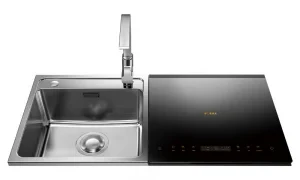From its roots as a traditional garment worn for modesty and cultural identity, the abaya dress has undergone a remarkable evolution to become a symbol of modern fashion. With its origins in the Arabian Peninsula, the abaya dress was initially designed as a loose-fitting, floor-length cloak worn by women to cover their bodies, preserving their modesty.
Over the years, however, the abaya dress has embraced innovation and emerged as a fashionable and stylish garment that caters to the diverse tastes of women worldwide. Today, abaya dresses come in a variety of designs, colors, and materials, showcasing intricate detailing, embellishments, and unique cuts that highlight the wearer’s individuality.

Throughout this evolution, designers have upheld the essence of modesty while incorporating contemporary elements, such as flared sleeves, delicate embroidery, and embellishments, creating a perfect blend of tradition and modernity. The abaya dress has transcended its cultural roots to make a statement on international runways, emerging as a fashion trend embraced by women of all backgrounds.
With its rich history and adaptability, the abaya dress exemplifies the fusion of tradition and modern fashion, making it a timeless and iconic piece coveted by fashion enthusiasts worldwide.
Traditional significance of the Abaya dress
The abaya dress holds deep cultural significance in the Arabian Peninsula and other regions where it is worn. Traditionally, it was a symbol of modesty and a way for women to protect themselves from prying eyes. The loose-fitting design and flowing fabric ensured that a woman’s body remained concealed, in line with cultural norms.
The abaya dress also served as a means to express cultural identity. Different regions had their own unique styles and embellishments, showcasing the rich diversity of the Arab world. From intricate embroidery to vibrant colors, each abaya dress was a work of art, reflecting the heritage and traditions of the wearer.
As time went on, the abaya dress became more than just a traditional garment. It became a statement of faith, a symbol of cultural pride, and a way for women to assert their identity in a rapidly changing world.
Historical evolution of the Abaya dress
The evolution of the abaya dress can be traced back to the early days of Islam when it was introduced as a garment for women to observe modesty. Originally, it was a simple, unadorned cloak that covered the entire body, with a small opening for the face. Over time, the design evolved to incorporate more intricate details and embellishments.
In the early 20th century, the abaya dress began to undergo a significant transformation. The simple, plain designs gave way to more elaborate styles, with the introduction of embroidery, beading, and luxurious fabrics. The abaya dress became a fashion statement, with women embracing the opportunity to express their individuality through their choice of garment.
In recent decades, the abaya dress has seen an even greater shift in design. Western influences, globalization, and the rise of social media have all played a role in shaping the modern abaya dress. Designers have taken inspiration from international fashion trends, incorporating elements such as fitted silhouettes, statement sleeves, and unique cuts, while still maintaining the essence of modesty.
Influences on the modernization of the Abaya dress
The modernization of the abaya dress can be attributed to various factors that have influenced fashion trends in the Arab world. One significant influence is globalization. The ease of travel and access to different cultures and fashion trends have exposed designers and consumers to a wide range of styles and designs. This cross-cultural exchange has led to a fusion of traditional and modern elements in the abaya dress.
Another major influence is the rise of social media. Platforms like Instagram and YouTube have given designers and fashion influencers a global platform to showcase their creations and inspire others. Through these channels, the abaya dress has gained popularity among fashion enthusiasts worldwide, leading to a demand for more innovative and contemporary designs.
Additionally, the empowerment of women has played a crucial role in the modernization of the abaya dress. Women are now seeking clothing that allows them to express their personal style while still adhering to cultural norms. Designers have responded to this demand by creating abaya dresses that are not only modest but also fashionable, allowing women to feel confident and empowered.
Contemporary styles and designs of the Abaya dress
Today, abaya dresses come in a wide array of styles, designs, and materials. Traditional black abayas are still popular, but designers have expanded the color palette to include pastels, neutrals, and even vibrant hues. Embroidery, lace, and sequins are used to create intricate patterns and add a touch of glamour to the garment.
The silhouette of the abaya dress has also evolved. While the traditional design featured a loose-fitting, floor-length cloak, contemporary styles include tailored abayas that accentuate the figure, as well as abayas with flared sleeves, ruffles, and pleats. These variations allow women to personalize their abaya dress and make a fashion statement that reflects their unique personality.
Innovative cuts and drapes have further transformed the abaya dress. High-low hemlines, asymmetrical designs, and layered looks add a modern twist to the traditional garment. Some abaya dresses even incorporate elements from other cultural styles, creating a fusion of fashion influences.
Abaya dress in international fashion
The abaya dress has transcended its cultural origins to make a statement on international runways. In recent years, it has gained recognition as a fashion trend embraced by women of all backgrounds. Designers from around the world have incorporated the abaya dress into their collections, showcasing its versatility and appeal.
Fashion events such as Dubai Fashion Week and the Arab Fashion Week have provided a platform for designers to showcase their abaya creations to a global audience. These events have not only highlighted the beauty and craftsmanship of the abaya dress but also challenged stereotypes and misconceptions about modest fashion.
Celebrities and influencers have also played a significant role in promoting the abaya dress on the international stage. From red carpet appearances to magazine covers, the abaya dress has been embraced by influential figures who recognize its elegance and cultural significance. This exposure has further propelled the popularity of the abaya dress in the fashion industry.
Abaya dress as a symbol of empowerment
The abaya dress has become more than just a fashion statement; it has become a symbol of empowerment for women. In a world where women are constantly navigating societal expectations and cultural norms, the abaya dress allows them to embrace their identity while expressing their personal style.
By choosing to wear the abaya dress, women are reclaiming their agency and challenging the notion that modesty equals oppression. They are making a statement that they can be fashionable, confident, and true to their cultural heritage all at once. The abaya dress has become a tool for self-expression and a means for women to celebrate their individuality.
Abaya dress in the media and popular culture
The abaya dress has made its mark in the media and popular culture, further solidifying its place in the world of fashion. It has been featured in movies, television shows, and music videos, showcasing its beauty and cultural significance to a global audience. The abaya dress has become synonymous with elegance and sophistication, representing the intersection of tradition and modernity.
In addition to its presence in mainstream media, social media platforms have played a pivotal role in promoting the abaya dress. Influencers and fashion bloggers have used their platforms to showcase their abaya outfits, inspiring others and challenging traditional notions of fashion. Through hashtags and online communities, women from all over the world can connect and share their love for the abaya dress.
Abaya dress trends and innovations
The abaya dress continues to evolve as designers push the boundaries of creativity and innovation. Trends come and go, but the abaya dress remains a timeless and iconic piece. Some of the recent trends include the use of sustainable fabrics and eco-friendly production methods, reflecting a growing awareness of environmental issues in the fashion industry.
Innovations in technology have also influenced the design and production of abaya dresses. 3D printing, digital embroidery, and laser cutting techniques have allowed designers to create intricate patterns and designs with precision and efficiency. These advancements have opened up new possibilities for customization and personalization, allowing women to create abaya dresses that truly reflect their style and personality.








































